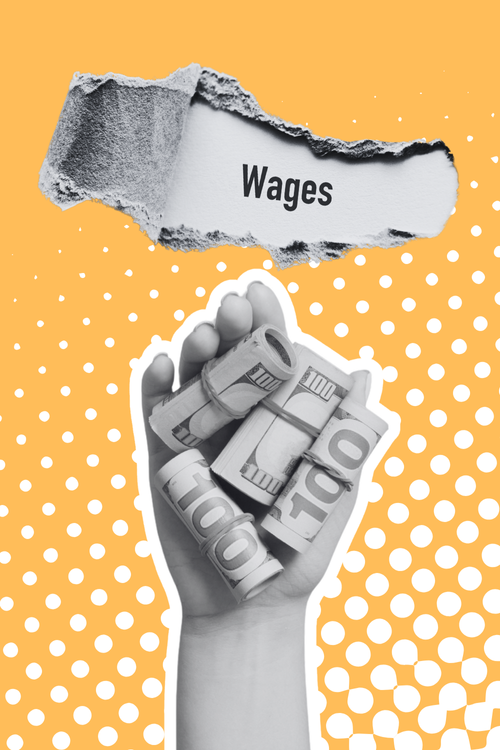In today's economy, millions of workers find themselves caught in a troubling paradox: despite working full-time or even multiple jobs, they still struggle to afford life's basic necessities. The concept of a living wage has emerged as a critical focal point in discussions about labor rights, economic justice, and human dignity. As corporations post record profits while workers face rising costs, the gap between minimum wages and what people actually need to live decently continues to widen, making the fight for a living wage more urgent than ever.
Understanding the Living Wage Concept
A living wage fundamentally differs from a minimum wage in both concept and calculation. While minimum wages are legally mandated and often politically determined, living wages are based on actual costs of living and typically set at higher levels. The living wage is a family concept - it must support not just an individual worker but their family as well.
According to the International Labour Organization (ILO), which reached a formal definition consensus in March 2024, a living wage is "the wage level necessary to afford a decent standard of living for workers and their families, taking into account country circumstances and calculated for work performed during normal hours". This definition emphasizes that a living wage must provide for more than mere survival.
A comprehensive living wage covers essential needs including food, housing, energy, water, sanitation, healthcare, education, clothing, and transportation. Additionally, it should provide for discretionary income and savings, be earned during normal working hours (not through excessive overtime), represent take-home pay, and exclude non-guaranteed bonuses. This holistic approach recognizes that workers deserve not just to exist, but to participate fully in society with dignity.
Living Wage as a Human Rights Issue
The concept of a living wage is deeply intertwined with fundamental human rights principles. Both Article 25 of the UN Declaration on Human Rights and Article 11 of the UN Convention on Economic, Social, and Cultural Rights recognize the right to an adequate standard of living for workers and their families. This rights-based framework positions adequate compensation not as charity or privilege, but as an essential entitlement.
Nearly 241 million workers worldwide live in extreme poverty, unable to ensure decent living conditions for themselves and their families. This working poverty is particularly prevalent in industries with large, complex global supply chains, such as the garment industry, where wages often fall far below what's required for a decent standard of living.
The Reality of Working Poverty
Today's economic landscape presents significant challenges for workers across various sectors. Many find themselves squeezed between rising prices and stagnant wages, often forcing them to take on second or third jobs just to scrape by. This predicament exists despite the fact that many corporations continue to reap record profits while severely underpaying their workforce.
In the United States, the federal minimum wage stands at just $7.25 per hour—a rate that hasn't increased since 2009. This prolonged wage stagnation has had devastating consequences for millions of American workers. For tipped workers, the situation is even more dire, with a federal subminimum wage that hasn't changed since 1991.
Disproportionate Impact on Vulnerable Groups
Low wages don't affect all workers equally. Black workers and other workers of color - especially women - make up a disproportionate share of severely underpaid workers. Globally, women earn 20% less than men, placing them at higher risk of experiencing poverty. This intersection of wage issues with gender and racial inequalities amplifies the urgency of the living wage fight as a matter of social justice.
The consequences of inadequate wages extend beyond immediate financial hardship. Without sufficient income, workers often face impossible choices between necessities like healthcare, housing, or food. Many essential workers, including care staff supporting our most vulnerable populations and healthcare workers at the frontlines of public health crises, continue to work for poverty pay despite their critical social contributions.
Living Wage as an Economic Strategy
While opponents often frame living wages as economically burdensome, evidence suggests the opposite. Research indicates that better worker rights result in higher productivity growth, leading to faster economic growth overall. This challenges the conventional wisdom that suppressing wages is necessary for economic competitiveness.
Studies have consistently demonstrated that improved worker rights tend to result in a better distribution of income, both among workers and between workers and firms. As benefits of faster growth are more evenly distributed, local demand becomes stronger and more stable, reducing the chances of financial crises.
Business Benefits of Fair Wages
Beyond macroeconomic advantages, implementing living wages makes good business sense at the organizational level. Fair wages improve productivity, reduce employee turnover, and enhance brand reputation. They contribute to a more engaged workforce, lower hiring costs, greater consumer trust, and better compliance with evolving labor regulations—ultimately driving long-term profitability and sustainability.
A study by the World Bank found that coordinated collective bargaining was associated with improved macroeconomic performance in the 1970s and 1980s. Other research has shown that in a sample of over 100 nations, countries with more political freedoms pay wages that are 10-20% higher than in less free countries.
Current Advocacy and Movements
Around the world, labor organizations, civil rights groups, and community advocates continue to push for living wage policies through various strategies. Unions like UNISON have a proud tradition of fighting poverty pay, having been at the forefront of the living wage movement since the early 2000s. Their advocacy has led to concrete gains, including the establishment of the Living Wage Foundation, which announces real living wage rates annually.
The labor movement's fight for proper pay informs broader campaigns like the "No Going Back to Normal" initiative, which emphasizes that public service workers deserve just and fair compensation for their essential work. As one UNISON representative noted, "You cannot praise public service workers for keeping our communities going, for saving lives, while simultaneously expecting the same people to survive on poverty pay".
Collective Action for Change
Labor organizing remains a powerful tool in the fight for living wages. In the United States, organizations are advocating to raise the federal minimum wage closer to a living wage, expand overtime pay eligibility, and protect the rights of cities and counties to set higher local minimum wages. The proposed Raise the Wage Act aims to gradually increase the federal minimum wage to $17 an hour by 2028 and end subminimum wages for tipped and disabled workers.
More immediate collective actions have also been taking place. On April 5, 2025, a coalition of labor unions, civil rights organizations, and community groups gathered in SeaTac for a rally and march protesting federal policies that harm workers' rights. This "March to Melt Ice" event, organized by Organized Workers for Labor Solidarity (OWLS) and supported by over a dozen labor and advocacy groups, demonstrates the continued importance of visible public action in the fight for economic justice.
Challenges in the Modern Economy
The changing nature of work presents both new obstacles and familiar challenges in the fight for living wages. The rise of the gig economy, platform-working, on-demand apps, and algorithmic monitoring has transformed labor relations for many workers. Companies like Uber, Deliveroo, and TaskRabbit have rapidly changed how work is organized and compensated, often classifying workers as independent contractors rather than employees entitled to wage protections.
However, it's debatable whether these developments represent truly new features of the labor market or simply modern manifestations of persistent labor issues that have affected workers throughout the history of capitalist economies. The core concerns - enforced casualization, extensive monitoring, low pay, and uncertain hours - have historical precedents, though they may take new forms in today's digital landscape.
Implementation Challenges
Even with growing support for living wages, significant implementation challenges remain. A major obstacle is the accurate estimation of living wages across different geographic contexts with varying costs of living. The voluntary nature of many living wage initiatives also means that while some workers benefit from increases, many others - particularly those in less visible or less organized sectors - continue to receive poverty pay.
Government policies often actively work against living wage implementation. Authorities worldwide use various means - from bureaucratic maneuvers to force and criminalization of worker organizing - to attract foreign investors with promises of cheap labor. They set legal minimum wages below official poverty lines, fail to adjust wages for inflation, and encourage informal labor practices that further erode workers' access to mandated benefits.
Moving Forward: Strategies for Progress
Despite these challenges, the fight for a living wage continues to gain momentum. Economic evidence increasingly supports the view that fair wages benefit not just workers but the broader economy. Studies comparing the impact of labor standards versus trade liberalization show that improved labor rights can produce much more significant wage gains than traditional market liberalization approaches.
For instance, research suggests that a country like Mexico could realize average wage gains of 10-40% by attaining political freedoms similar to those in the United States, compared to less than 2% wage increase from complete removal of all trade barriers worldwide. This evidence challenges conventional economic wisdom and provides powerful arguments for living wage advocates.
The path forward requires multi-faceted approaches: strengthening labor organizations, advocating for policy changes, raising public awareness, and holding employers accountable. It also demands recognition that a living wage is not merely an economic issue but a fundamental human rights concern tied to dignity, equity, and social justice.
Conclusion
The fight for a living wage represents a cornerstone struggle in the broader movement for labor rights and economic justice. As workers continue to face rising costs of living, stagnant wages, and changing work arrangements, the need for compensation that allows for a decent standard of living becomes increasingly urgent.
The evidence is clear: living wages benefit not only workers but also businesses and the broader economy. They contribute to reduced poverty, increased economic equality, enhanced productivity, and greater social stability. Most importantly, they recognize the fundamental dignity of work and workers' right to participate fully in society.
As we move forward in this ongoing struggle, it's essential to remember that the fight for a living wage is not new - it's part of a long historical arc of labor advocacy. Whether in 2025 or 1925, the core challenge remains: how to ensure that those who work for a living can actually make a living from their work. By building on existing momentum, strengthening coalitions, and continuing to make the economic and moral case for fair compensation, advocates can continue to advance this vital cause in the modern economy.

